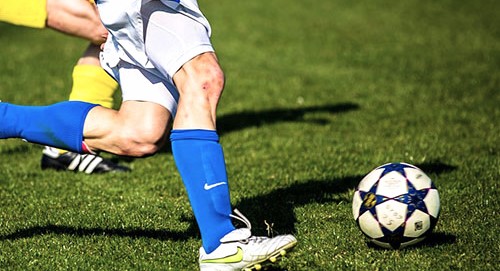High-Impact Teen Sports Lead to Surprising Result Study Reveals
 In a new study, researchers from Juntendo University in Tokyo have discovered that participating in high-impact sports during adolescence has lasting benefits on bone health, even extending into old age.
In a new study, researchers from Juntendo University in Tokyo have discovered that participating in high-impact sports during adolescence has lasting benefits on bone health, even extending into old age.
 The study, led by Dr. Yoshifumi Tamura, analyzed the bone mineral density (BMD) of nearly 1,600 individuals aged 65 to 84 and revealed intriguing links between teenage sports activities and bone strength later in life.
The study, led by Dr. Yoshifumi Tamura, analyzed the bone mineral density (BMD) of nearly 1,600 individuals aged 65 to 84 and revealed intriguing links between teenage sports activities and bone strength later in life.
"Physical exercise in adolescence affects BMD more than 50 years later in older adults."
His team found that high-impact sports like basketball, volleyball, and swimming during teenage years significantly enhance BMD, a crucial factor in preventing osteoporosis.
This disease, characterized by the deterioration of bone tissue, is a leading cause of falls and fractures among the elderly, necessitating long-term care.
The study's participants, who engaged in various sports activities during their youth, exhibited stronger bone health in their later years. For example, those who played basketball had notably higher thigh bone density, while women who swam or played volleyball in their teens showed stronger lower spine bones.
Surprisingly, sports types were not linked with lower spine bone density in men. However, factors like body weight, vitamin D levels, and diabetes presence played a significant role in their bone health.
"BMD is difficult to increase once it decreases. Therefore, it is important to increase peak bone mass during adolescence to maintain BMD in old age."
His research underscores the importance of early physical activities, not just for athletes but for all adolescents, in fostering lifelong bone health. The study also revealed that while men's bone density values were within normal ranges, women had lower values and a higher incidence of osteoporosis medication usage. Interestingly, diabetes, physical activity, smoking, and alcohol intake were significantly higher in men.
The study also revealed that while men's bone density values were within normal ranges, women had lower values and a higher incidence of osteoporosis medication usage. Interestingly, diabetes, physical activity, smoking, and alcohol intake were significantly higher in men.
The implications of this study are far-reaching, offering valuable guidance for selecting sports activities during adolescence to reap long-term health benefits. Engaging in high-impact sports can thus lay a foundation for healthier, stronger bones well into the golden years.
Read the study!
![HR Logo [Recovered]_Full Color Vertical-1](https://blog.healthyroster.com/hs-fs/hubfs/HR%20Logo%20%5BRecovered%5D_Full%20Color%20Vertical-1.png?width=199&height=178&name=HR%20Logo%20%5BRecovered%5D_Full%20Color%20Vertical-1.png)
 By
By


